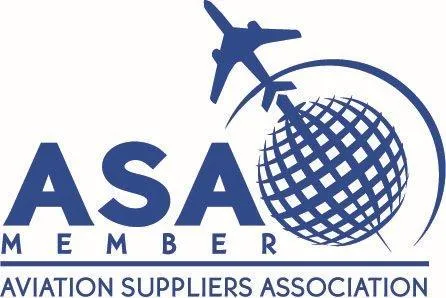
Smarter MRO: Where Technology Meets Compliance
Aviation maintenance has never faced greater demands for accuracy, transparency, and regulatory alignment than it does today. MRO compliance is not just a regulatory necessity but a key driver of operational efficiency, safety, and asset value protection. Global fleets continue to expand while regulators tighten standards, requiring maintenance providers to adopt more efficient processes. Airlines, lessors, and MRO organizations are leveraging advanced technology to streamline compliance, mitigate risks, and enhance documentation integrity.
Legacy paper-based systems, manual audits, and disconnected data workflows cannot meet modern compliance demands, especially when material is moved throghout the supply chain. Delayed inspections, missing records, and undocumented repairs jeopardize airworthiness and financial outcomes. Digital solutions are now central to meeting MRO compliance requirements while accelerating operational performance. Operators investing in traceability, automation, and intelligent inspection tools are future-proofing both their fleets and their regulatory readiness.
The Growing Demands of MRO Compliance in Modern Aviation
MRO compliance serves as the foundation for ensuring safe, airworthy, and reliable aircraft operations. Regulatory bodies, such as the FAA, EASA, and CAAC, impose strict requirements for record-keeping, component tracking, and maintenance verification. Failure to maintain accurate compliance records can result in fines, operational delays, or grounded aircraft. Rising fleet complexity has only increased the challenge of preserving real-time compliance.
A 2024 report highlighted that nearly 60% of MRO providers cited compliance data management as their top operational pain point. Airlines face mounting challenges when managing component traceability across multiple lessors, operators, and maintenance cycles. Gaps in MRO compliance jeopardize lease returns, resale valuations, and regulatory audits. Every missing document creates operational risk.

Increasing airworthiness directives (ADs) and service bulletins (SBs) add additional pressure on MRO teams. Managing regulatory updates manually introduces error risks that could compromise safety. Compliance must be automated, validated, and auditable throughout the entire lifecycle of every component.
The aviation industry recognizes that compliance is no longer just a quality function but a core business driver. Operators that adopt digital compliance systems gain a competitive advantage in terms of reliability, cost efficiency, and risk mitigation.
How Digital Records Transform MRO Compliance
Transitioning to digital recordkeeping is one of the most impactful moves an MRO organization can make toward achieving robust compliance. Digital records eliminate the inconsistencies, loss, and inefficiencies of paper-based workflows. Every maintenance action, component replacement, or inspection generates a secure digital footprint that supports MRO compliance.
Automated document validation tools check records against airworthiness requirements, OEM specifications, and regulatory mandates in real time. Digital error detection prevents improper part installations, missed inspections, or incomplete maintenance logs. MRO compliance becomes proactive rather than reactive.
Digital records also streamline lease transitions. Aircraft returning to lessors require complete, validated documentation for every part and maintenance event. Faster retrieval of accurate MRO compliance records reduces costly lease penalties and minimizes downtime.
AI and Automation Improve Compliance Accuracy
Artificial intelligence (AI) and automation have become critical tools in ensuring MRO compliance accuracy. AI-driven systems process vast amounts of maintenance data, scanning for anomalies, missing documentation, or inconsistencies that could lead to compliance breaches. Automated validation increases both speed and precision.
Machine learning models help identify patterns associated with maintenance risks or recurring compliance failures. A 2024 article reported that MRO providers using AI reduced document error rates by over 35%. AI augments human inspectors, highlighting discrepancies or outdated regulatory references before they cause operational disruptions.
Automation also plays a key role in document generation and storage. Maintenance teams can auto-generate task cards, compliance certificates, and log entries based on sensor data or completed work orders. Automated workflows reduce clerical errors and ensure every maintenance action is traceable.
Predictive analytics enhances compliance by forecasting which components are likely to face regulatory scrutiny or fatigue-based failures. MRO compliance strategies evolve from being reactive to condition-based, supported by AI-driven insights and real-time operational data.
The Link Between Traceability and Compliance
Traceability is the backbone of MRO compliance. Regulators require proof that every component installed on an aircraft has a clear, documented lineage from manufacture to current use. Failure to provide back-to-birth trace documentation can result in grounded assets and substantial penalties.
Digital traceability systems capture every transaction in a component’s lifecycle, including manufacturing data, repair histories, ownership changes, and installation events. Inspection records, non-routine repairs, and service bulletins are linked directly to part histories, creating a comprehensive compliance profile.
Fleet operators benefit significantly from improved traceability during audits and lease returns. Lessors frequently reject aircraft return packages when trace documents are incomplete or unverifiable. Operators with strong traceability practices maintain better asset value and avoid expensive disputes.
Regulatory bodies are increasingly expecting real-time traceability rather than relying on retroactive document searches. An aviation report from 2023 indicated that 70% of regulators now prefer digital traceability during airworthiness inspections. MRO compliance becomes more efficient, reliable, and transparent when powered by comprehensive digital records.
Strengthen MRO Compliance with Proven Digital Solutions
ProvenAir offers advanced digital traceability and lifecycle documentation solutions that support full MRO compliance for aviation operators, lessors, and MRO providers. ProvenAir supports FAA-aligned best practices for electronic recordkeeping under AC 120-78B. Our software is designed to help certificate holders meet FAA compliance requirements for electronic records under 14 CFR parts 43, 91, 121, and 145.
Our platform reduces audit risks, accelerates lease transitions, and ensures your compliance records are complete, accurate, and secure. ProvenAir is being used in FAA-accepted recordkeeping systems for compliance with AC 120-78B. Learn more about how ProvenAir empowers smarter, safer operations.


